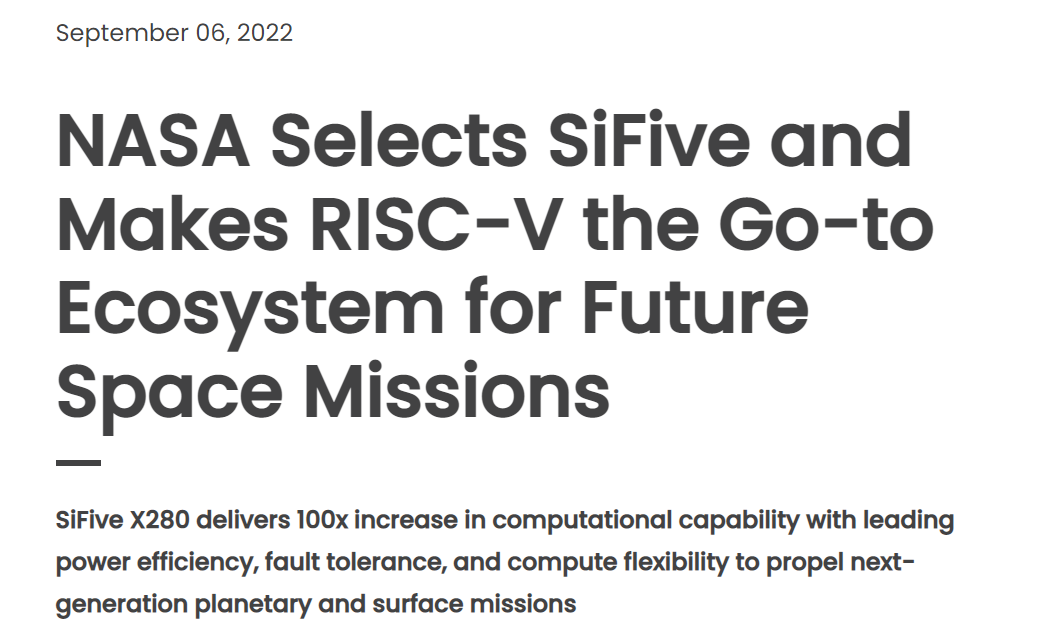SiFive announced that it has been selected by NASA to provide the core CPUs for NASA’s next-generation High Performance Space Computing (HPSC) processors.Founded in 2015, SiFive is a chip designer based on the RISC-V architecture, dedicated to bringing open source standards to semiconductor designs, making them cheaper and easier for customers to use.
According to the introduction, the processor will be powered by SiFive and Microchip joint research and development design;HPSCs are expected to be used for nearly all future space missions, from planetary exploration to missions to the surface of the moon and Mars. The HPSC will utilize an 8-core SiFive Intelligence X280 RISC-V vector core and four additional SiFive RISC-V cores to provide 100 times the computing power of today’s space computers. “The dramatic increase in computing performance will help bring new possibilities to various mission elements, such as autonomous rovers, vision processing, spaceflight, guidance systems, communications and other applications.”

The SiFive X280 is a multi-core-enabled RISC-V processor with vector scaling and SiFive intelligent scaling, optimized for AI/ML computing at the edge. The X280 is ideal for applications that require high throughput, single-threaded performance while being severely power-constrained.
Compared to today’s space computers, the X280 has 100 times more computing power. In scientific and space workloads, the X280 offers orders of magnitude improvement over competing CPU solutions.SiFive claims that these vector extensions enable chip designers to achieve six times higher performance than standard RISC-V vector instructions, while maintaining the platform’s low power consumption. In addition to sheer performance, chips for outer space have to deal with harsh operating conditions, and the new fault-tolerant processor is one of the hallmarks of the X280.
The new HPSC processor is designed toReplacing the aging PowerPC-based BAE RAD750, which was introduced more than 20 years ago and has been used in countless spacecraft, including the Curiosity and Perseverance rovers and the James Webb Space Telescope.
Jack Kang, SiFive’s senior vice president of business development, said NASA’s last chip was decades old, so the new one RISC-V Chips will also be used for decades to come. and said,RISC-V architecture is one of the most likely to have a large developer base in 10, 15 or even 20 years, so choose RISC-V Would be a safe bet for NASA.
In the future, the HPSC processor and X280 computing subsystem are expected to be useful to other government agencies in a variety of applications, including industrial automation, edge computing, approval intelligence, and aerospace applications, the announcement states.
Further reading:
#NASA #selects #RISCV #nextgeneration #highperformance #aerospace #computing #chips